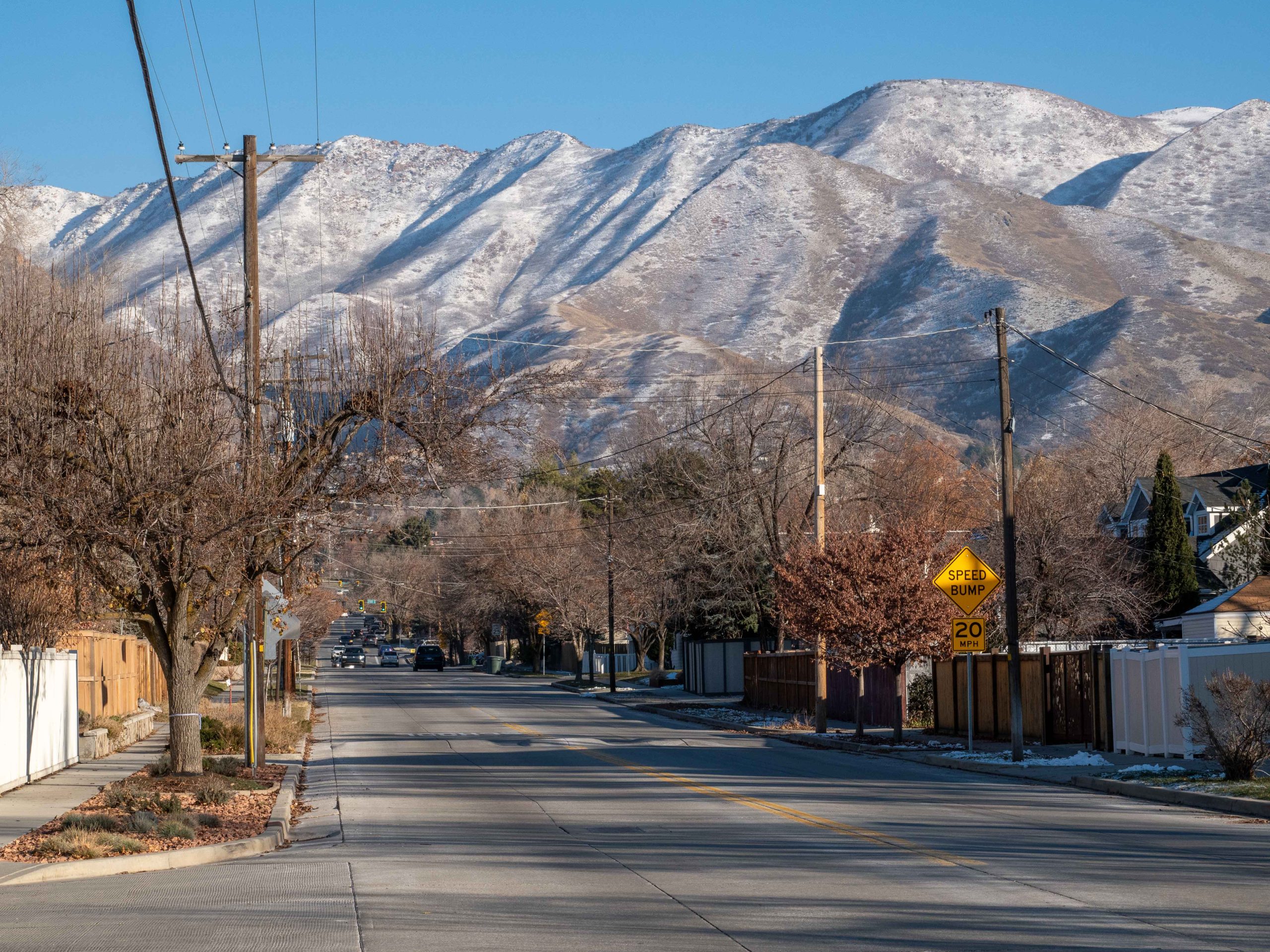
1300 South and 2100 East Traffic Calming
Project Update (12/11/2023): Construction is now complete on the section of 2100 East north of 1300 South. All other sections (2100 E, south of 1300 S and 1300 S, from 1700 E to Foothill) have completed construction and all signs and striping are in place.
Project Overview
In late 2022, residents from the neighborhoods near the 1300 South and 2100 East intersection had a growing concern about safety along these two corridors and at the intersection itself. After the Transportation Division implemented a Leading Pedestrian Interval (LPI) at the intersection, the community requested additional traffic calming along 1300 South and 2100 East to reduce speed through the area.
Our team collected traffic and safety data along these two street segments and created a plan designed around overall speed reduction. The design will incorporate well-spaced and semi-frequent speed cushions along 1300 South and 2100 East. Three raised crosswalks will also be included in the plan at key points along these corridors.
In addition, there will be a reduction in the speed limit from 30 to 25 on 2100 East between Foothill Blvd and approximately 2200 South. The speed limit reduction will help ensure the speed limit is the same on 2100 East as it is along 1300 South.
FAQ
Frequently Asked Questions
What do speed humps do?
Speed humps are used to reduce speeding along a street by making motorists slow down to a safe speed.
Speed humps can be built in a variety of configurations (height and length parallel to traffic) and materials. The height and length of a speed hump are the most important variables that influence design speed.
What do speed cushions do?
Speed cushions are generally speed humps or speed tables that include wheel cutouts that fit the wheelbase of emergency response vehicles. Speed cushions allow these vehicles to pass unimpeded while reducing the speed of passenger cars. Cushions are typically used on key emergency response routes.
How do slower traffic speeds improve safety outcomes, especially regarding accidents?
Lowering traffic speeds helps in two ways: it reduces the odds of a crash happening, and it greatly reduces the severity of a crash if it happens.
The distance it takes to react to the need to stop and the action of stopping is the “stopping sight distance.” At 20 mph, this distance is about 115 feet. At 30 mph, it’s 200 feet. At 40 mph, it’s 305 feet. Additionally, slower speeds help broaden the cone of vision so that drivers can better perceive the pedestrian activities across the entire street. Slower speeds help prevent the crash from happening in the first place.
The force of impact increases exponentially with speed. As shown in the graph below, the force of impact at 40 mph is quadruple the force at 20 mph.
The net result is that high speeds kill, while slower speeds save lives. (NACTO https://nacto.org/publication/city-limits/the-need/speed-kills/)
Are speed humps and speed cushions included in the traffic calming toolkit?
Yes, along with speed tables, raised crosswalks and other vertical traffic calming measures. As far as efficacy in speed reduction, speed humps have shown to be the most effective traffic calming measure in most instances.
Traffic calming and, more specifically, speed humps have been implemented citywide and have generally been successful in slowing down vehicle speeds. A traffic calming study done in 2019 by University of Utah students provides context into the efficacy of speed humps, as well as other traffic calming measures. Check out the research document for further details on traffic calming in Salt Lake City.
Are speed cushions on 1300 South and 2100 East a potential option? Are they more expensive?
Speed cushions are being considered as an alternative to speed humps. Speed cushions are similar to speed humps but contain cut-outs that match the wheelbase of emergency vehicles. Speed cushions are similarly effective in reducing vehicle speeds but allow for emergency responders to continue at a constant speed.
For the 1300 South and 2100 East Traffic Calming project, the difference in cost between installing speed humps or speed cushions would be negligible.
What other traffic calming measures are being considered or planned in this area?
Traffic calming is regularly one of the top requests we receive citywide. We receive between 150-200 requests for traffic calming each year. District 6 and the neighborhoods around this project are no exception.
We have received requests to slow cars and/or otherwise improve safety at the intersections and streets throughout the surrounding neighborhoods: Yalecrest, Bonneville Hills, Wasatch Hollow and the East Bench. The Livable Streets team has installed some traffic calming elements around these areas this year: a speed feedback sign on Browning Avenue near 1300 East and improvements to the crossing at Dilworth Elementary on Westminster Avenue. Planned for this summer is a pedestrian walkway for children to walk to Indian Hills Elementary School safely.
Our team is constantly sorting through and prioritizing all traffic calming requests to determine which projects could be next for the quick action program. We are trying to balance the needs in these District 6 neighborhoods with neighborhoods across the City. For example, we are implementing quick action traffic calming projects this summer in communities in Sugar House and Poplar Grove.
Why are there so many planned speed humps?
When considering speed humps as a planned road speed intervention, repetition is important. Typically, speed humps are placed 250’ to 500’ apart as a best practice to discourage the behavior of speeding up after each hump. On 1300 South and 2100 East, these best practices will be observed to encourage better behavior and slower speeds from drivers.
Will the speed humps displace traffic onto other streets?
Will speed humps displace traffic onto local streets?
Potentially. In many instances, the placement of speed humps on a roadway has no observed effect on the volume of vehicles that use the street. There may be, however, minor traffic displacement onto local streets around the roadway with speed humps installed on it.
If displacement of traffic becomes a well-observed issue, the Transportation Division is willing to provide quick action traffic calming responses to these parallel streets.
What is the design speed of the speed humps?
The design speed of these planned speed humps is 15-25 MPH. Drivers should be comfortable navigating the speed humps traveling at or below the posted speed limit.
Will heavy vehicles (e.g. concrete mixers) going over the humps at the design speed create noise and vibration?
Possibly, yes. This will be site-specific and depends on distance from speed hump and home construction materials (e.g. single pane versus double pane windows). Some areas may experience minor noise and possibly a little vibration with heavy trucks, however the traffic mix on 1300 South does not have a high frequency of heavy trucks so it is not expected to be a constant nuisance. Also, it is important to note that traveling the speed limit can significantly reduce the amount of noise which is generated from a speed hump. If a vehicle is traveling over the posted speed limit, it may make more noise.
Will snow accumulate on one side of the humps when they’re plowed?
It depends on how the individual driver uses the plow controls. If the backside of the hump is not plowed, then regular traffic will compact/dissolve remaining snow.
Why do the speed humps end at 1700 East? Why not continue the project west toward 1300 East?
The starting point for this project was Foothill Drive and extended the project as far west as the budget would allow. 1700 East is the furthest point that could be reached within the constraints of the funding available.
Was a traffic analysis performed?
Yes. We collected both speed and traffic volume data for 1300 South. The traffic volumes are about 5,000 vehicles per day and the 85th percentile speed is about 31 mph. The speed humps will help considerably in reducing traffic speeds to a safer, more comfortable range which is more conducive to a community-oriented street like 1300 South.
Would flashing speed limit signs slow drivers down?
Yes, to an extent. Speed feedback signs can have a measurable impact on reducing vehicle speeds, but it depends on the context of the roadway. It also tends to have little impact on drivers who already operate their vehicle well over the speed limit. Speed humps are more effective at reducing speeds as compared to speed feedback signs.
What is the legal status of issuing traffic citations using cameras?
Utah law limits the use of photo radar to roads within school zones or on roads with a speed limit of 30 MPH or less. In addition, a uniformed police officer must be present along with the camera — a requirement that has effectively kept the cameras from being used in Utah. For this reason, Salt Lake City Police Department (SLCPD) does not use automated photo radar for traffic enforcement.
https://le.utah.gov/xcode/Title41/Chapter6a/41-6a-S608.html
What about traffic enforcement by SLCPD?
Any resident can request an officer presence on their street to help with traffic enforcement. To request enforcement in your area, send an email to SLCPDMotor@slcgov.com and include the following information:
· Address of traffic issue
· Nature of traffic issue (e.g. speeding, failure to stop, crosswalk issues, etc.)
· General time issues occurs
· Phone number or email address to receive a response from an officer
Project Map
Project Map
Speed Cushion Design Specifications
Speed Cushion Design Specifications
The planned speed cushion design is documented in the following schematic. This design will also be used in the Slow Down West Sugar House project that will be installed during the summer of 2023. The speed cushion standards are at the bottom of the provided document.
Engagement Report
Engagement Report
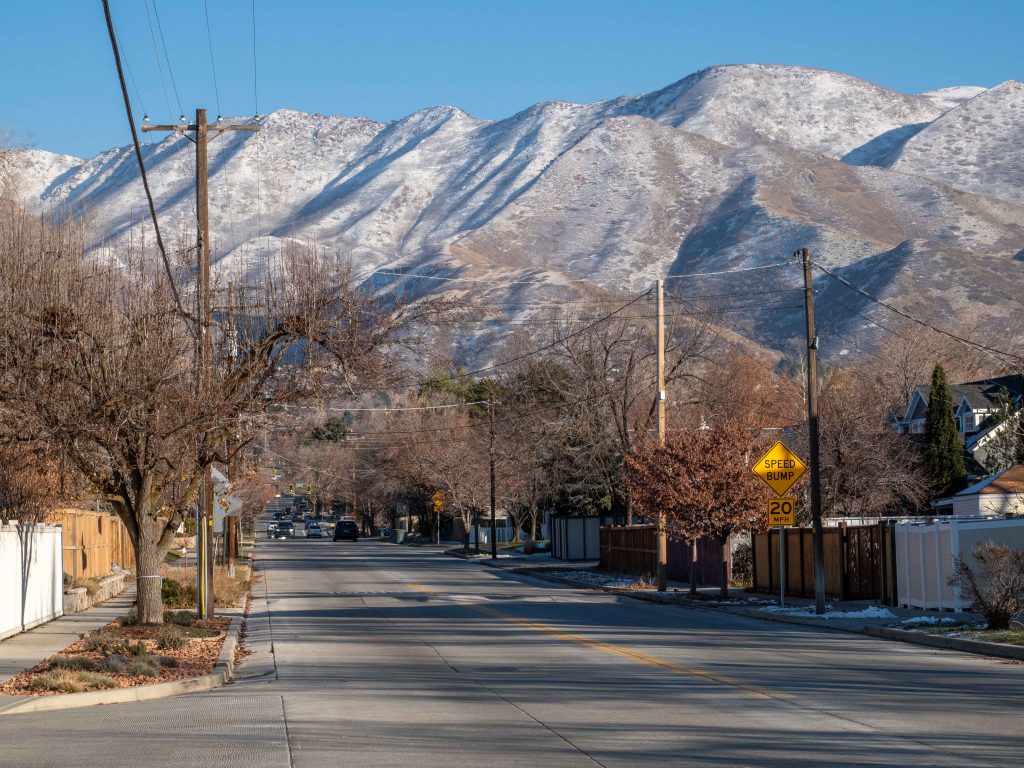
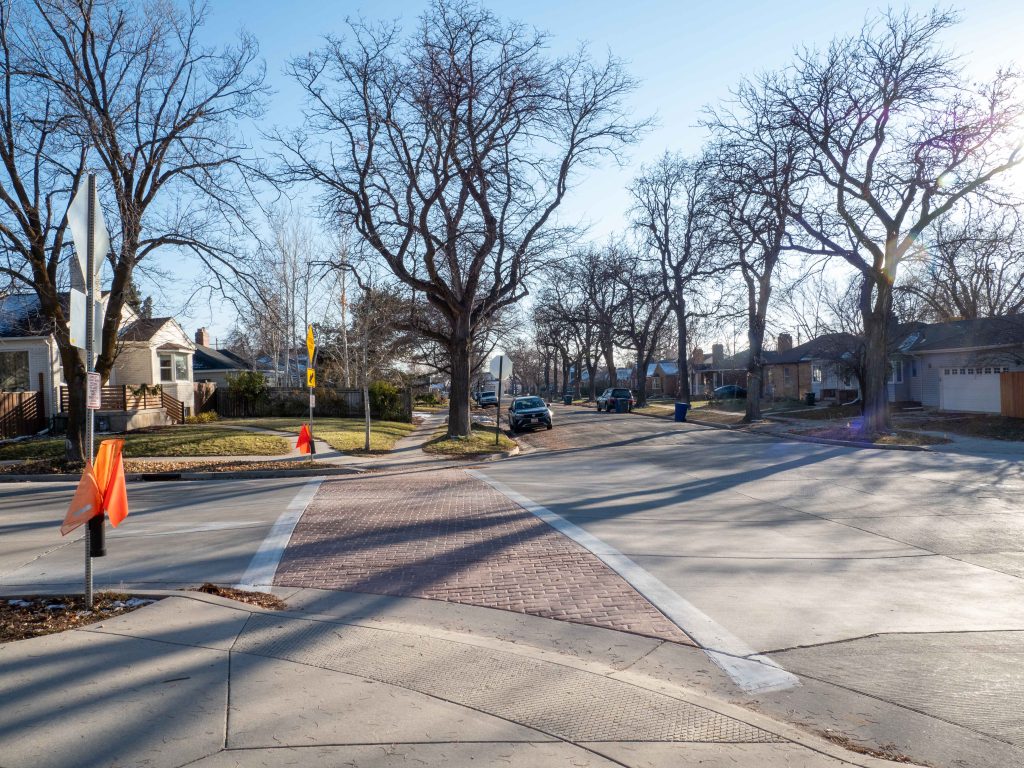
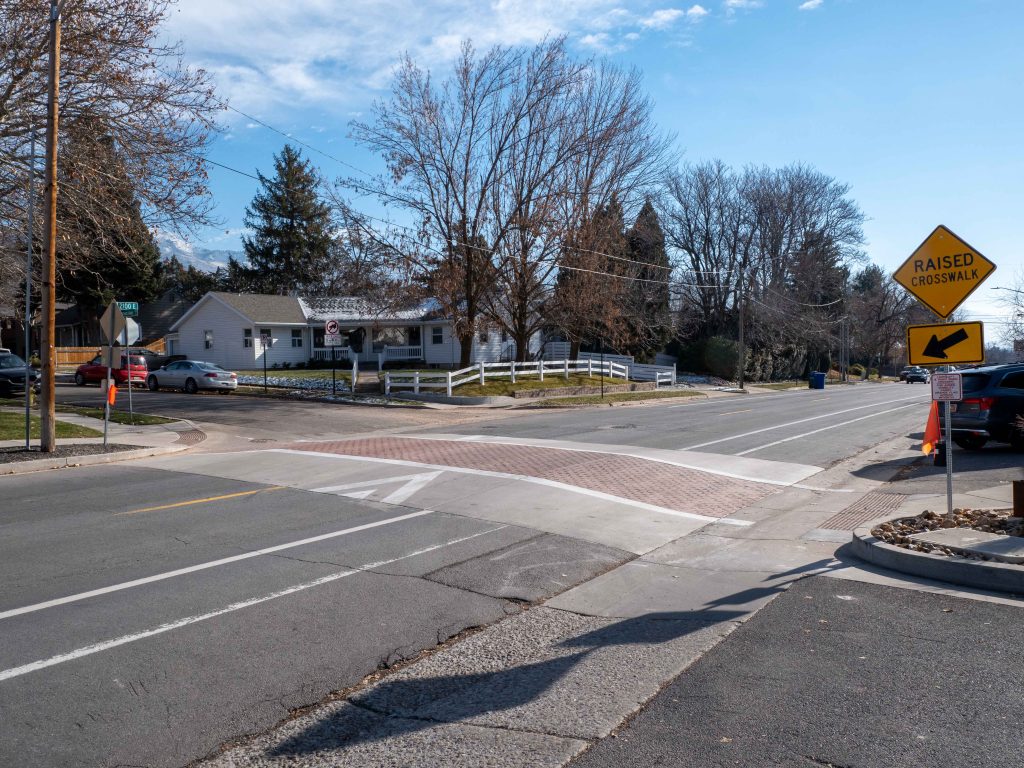
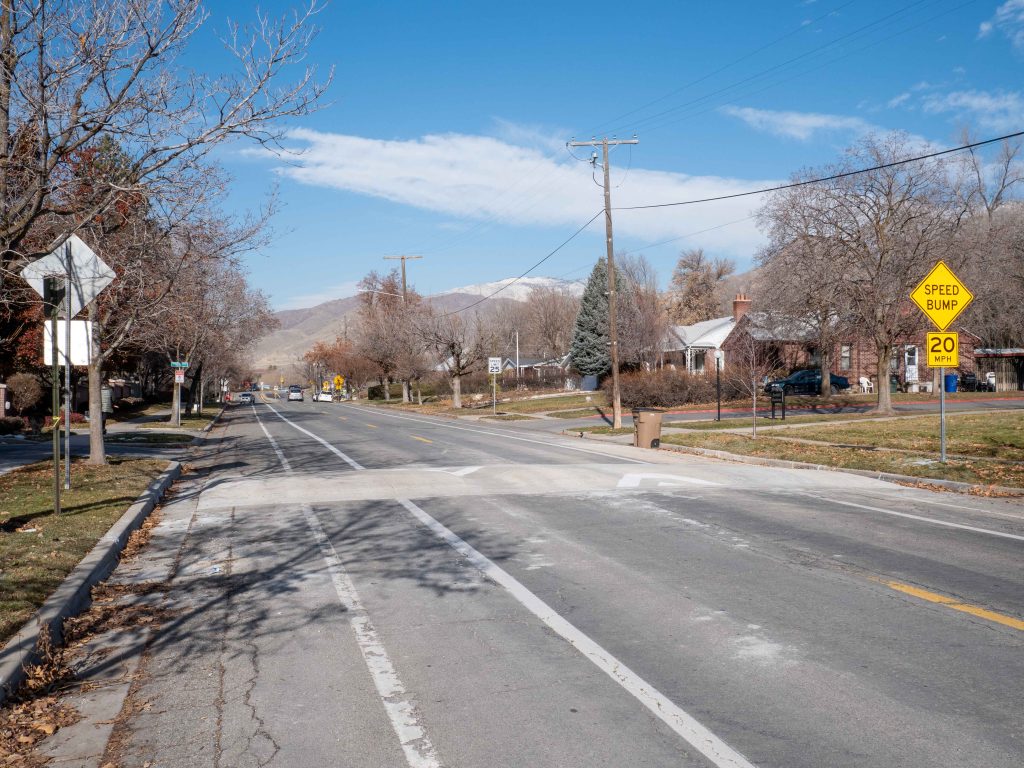
Contact Us
Project Manager | Bill Baranowski
Email | bill.baranowski@slcgov.com
Phone | 801-535-6498
Social Media | @SLCmoves @SLCgov